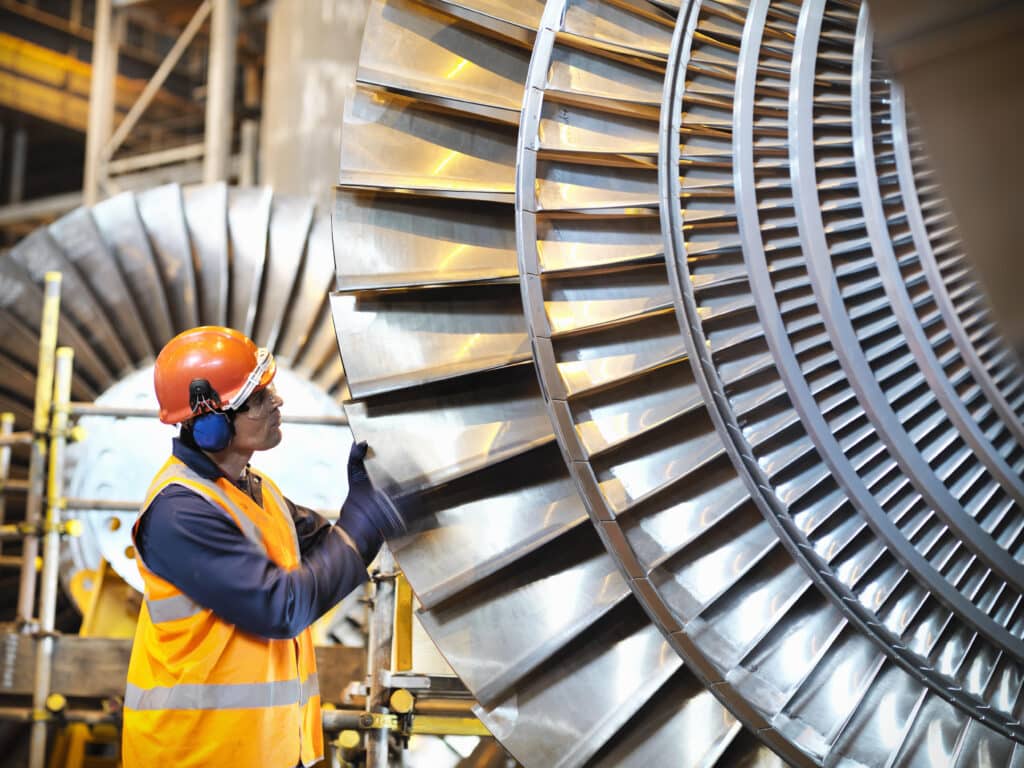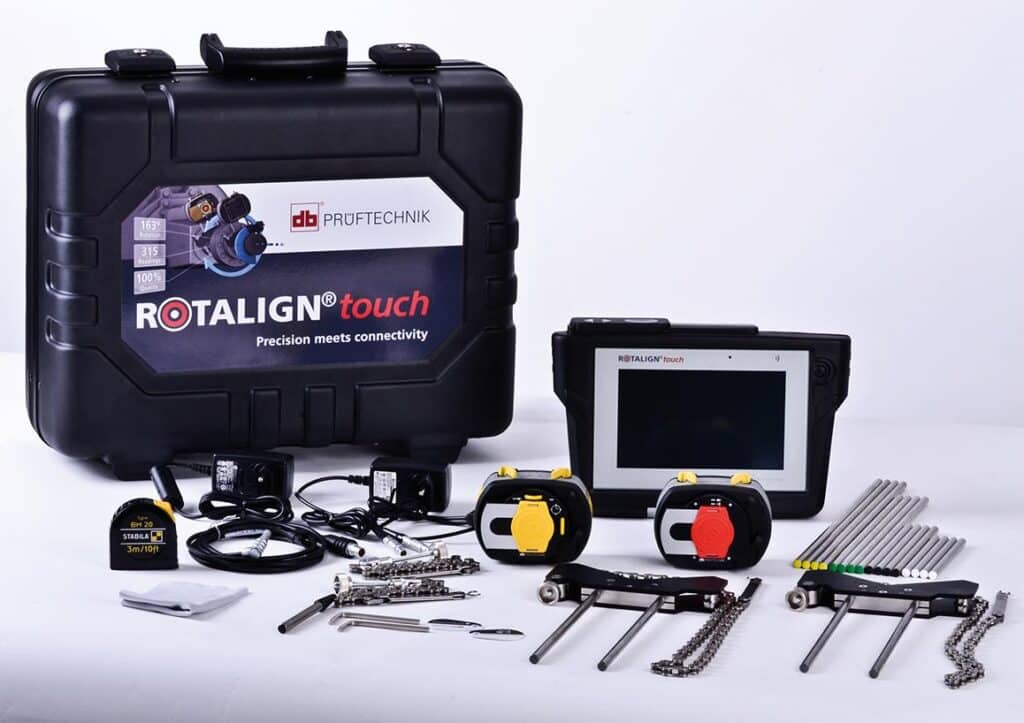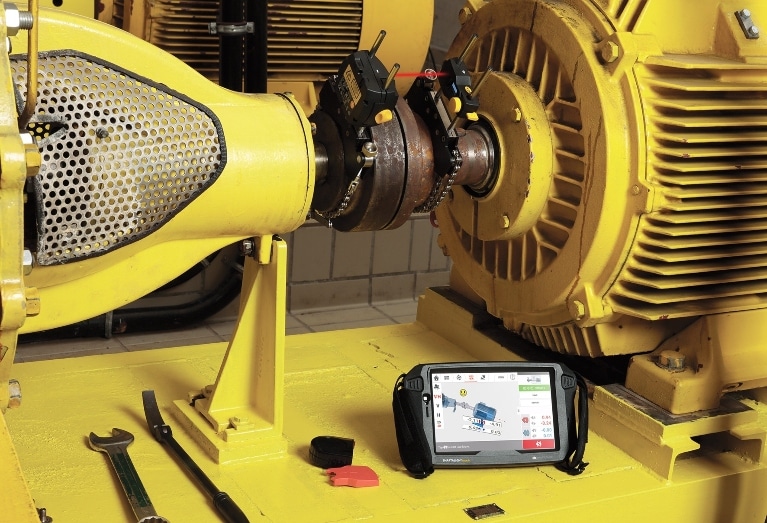
Demand for power is surging globally as many countries shift to renewable energy. But when coal plants shut down, they leave a gap in energy production that companies must rush to fill. Gas turbines — widely used in power generation, aviation, and oil and gas sectors — are stepping in to provide reliable, on-demand power when renewables can’t keep up.
The global gas turbine market is set to grow from $18.9 billion in 2021 to $22.5 billion by 2026 due to industrial expansion, the reshoring of manufacturing, and the explosive growth of data centers powered by artificial intelligence (AI). In the U.S., 54 gigawatts of coal-fired power plants are set to retire by 2030, and while renewables are scaling up, natural gas remains the most flexible and reliable option for stabilizing the grid.
But this is not just about keeping the status quo. Gas turbine manufacturers are also facing pressure to power the next industrial revolution, as the rapid expansion of AI-driven data centers is putting unprecedented strain on the grid. Goldman Sachs projects that data center power demand will rise by 160% through 2030 — and gas turbines will fuel 60% of that growth.
Gas turbines are therefore under more pressure than ever to run harder, longer, and more efficiently. And that means the technicians that keep them running have an increasingly unforgiving job.
Gas turbines operate at thousands of RPMs, with internal temperatures exceeding 2,000°F. The smallest misalignment doesn’t just reduce efficiency — it also shortens bearing life, increases fuel consumption, and raises the risk of costly shutdowns.
And when you’re the one responsible for keeping it running, even the smallest misalignment isn’t small at all, because it doesn’t just stay small. With pressure mounting on the gas turbine industry, next-generation alignment tools like the RotAlign Touch are becoming more vital to keeping machines running reliably with minimal downtime.
You Aligned Your Gas Turbine Perfectly. So Why Is It Still Failing?
A turbine can keep running with slight misalignment but by the time the signs are obvious via increased vibration, higher temperatures, increased fuel burn, or premature failures, the damage to the turbine is already done. These are the main ways turbine misalignments show up:
- Abrasion: Shafts grind against components, wearing them down.
- Thermal growth: Heat expands metal
- Erosion and fouling: Deposits choke efficiency and increase fuel burn.
- Vibration overload: Bearings and couplings take the hit, cutting turbine lifespan.
A turbine will keep running through these issues — but not for long. And if you’re still aligning the old way, you’ll never see these problems arising. This is because traditional alignment tools like dial indicators and early laser systems measure shafts when the machine is at rest. The values look right, but they don’t represent the full picture of the turbine’s condition.
When a gas turbine powers up, components move due to thermal expansion. Bearings settle. Couplings flex. Pipe strain introduces forces that weren’t there during alignment when the machine was offline.
Even soft foot and base distortions — issues that seem minor at shutdown — can shift the alignment condition in operating state over time.
Technicians try to adjust for this by applying thermal target offsets or tweaking shims based on experience. But without real-time data, alignment is based on assumptions rather than actual machine behaviour.
And that’s why misalignment keeps coming back.
Smarter Tools for More Accurate Turbine Alignment
So, how do you break the cycle? By changing how you measure alignment.
This involves adjusting the way you measure and account for impacts. Unlike smaller machines, turbine shafts don’t turn easily. They rely on cranes, chainfalls, or hydraulic jacks — methods that can introduce unintended movement, lift shafts in their bearings, or cause sudden “break-free” rotation that skews readings. Even once the shafts are moving, continuous sweep measurements are not recommended. Shaft settling, frame distortions, and external vibration can corrupt the data before technicians make a single correction.

That’s why real-time alignment systems like RotAlign Touch don’t just measure — they adapt.
- IntelliPoint measurement mode solves a problem every turbine technician knows too well: Shafts that don’t turn smoothly. Instead of relying on a single sweep, RotAlign Touch records alignment at multiple stopping points, eliminating errors caused by shaft settling or uneven rotation.
- Live Trend measures and records/logs in real-time the dynamic movement of the machine from off-line to operating state.
- Standard deviation filtering cuts through the noise. Gas turbines operate in environments full of external vibration, making it hard to know whether a misalignment reading is real or just interference. RotAlign Touch automatically filters out rogue data points, ensuring technicians aren’t chasing false corrections. When they go to make an adjustment, technicians can trust that it’s based on real machine behavior — not unreliable data.
- Live Move mode takes the guesswork out of corrections. In high-speed, high-temperature turbines, alignment shifts aren’t always visible until the machine runs at full load. The machine has to be shut down to perform a Live-Move realignment correction of the machine and technicians can watch alignment change in real time simultaneously in both the horizontal and vertical directions.
When technicians measure alignment dynamically instead of statically, turbines run with less stress, fewer failures, and higher efficiency.
Case Study
Few companies know the benefits of dynamic alignment better than Mitsubishi Power Aero, whose aero-derivative turbines operate at takeoff speeds where even slight misalignment can lead to catastrophic failure. To stay ahead of this, Mitsubishi Power Aero FT8® and FT4000® field services teams used the RotAlign Touch to help their customers deliver on-demand power.
After precise shaft alignment, turbines ramped up faster and more reliably — ready to generate power at a moment’s notice. As a result:
- The Mitsubishi Power Aero FT4000® SWIFTPAC® unit — the world’s largest-capacity aero-derivative gas turbine — now reaches full operational capacity in just 10 minutes. This rapid startup makes it a key resource for meeting sudden power supply needs.
- Accurate alignment keeps engines running efficiently, allowing Mitsubishi Power Aero turbines to generate up to 140 megawatts of power when electricity demand spikes. The service team can pinpoint even the slightest misalignments with the RotAlign Touch and correct them for optimal performance. This improves not only the life of the unit but also the customer’s profit margin.
Mitsubishi Power Aero proves what every turbine technician knows — alignment isn’t just about getting it right once, but keeping it right under real operating conditions.
Click here to learn more about Mitsubishi’s success with the RotAlign Touch.
Maintaining Machines That Keep the Lights On
Every turbine technician knows how critical their job is. When the grid leans on gas turbines to meet demand and every second of downtime carries a cost, they’re the one making sure everything runs.
Each megawatt a turbine generates comes down to precision. Turbine construction isn’t the only thing that matters — how these machines are aligned, maintained, and pushed to perform daily have an outsized influence on performance. The stakes are high, and there’s no room for guesswork when power demand spikes.
That’s why alignment can’t be a one-time fix. It has to hold under real-world conditions through every temperature shift and load change. Tools like RotAlign Touch reveal how alignment actually moves, giving technicians the control they need to stay ahead. Because when the pressure is on, the machines keeping the lights on can’t afford to fall behind — and neither can the people who keep them running.
More case studies:
Gas Turbine Alignment in Less Than an Hour

